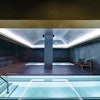Though most recreation facilities meet the legal requirements associated with accessibility, few address the actual needs of people with disabilities.
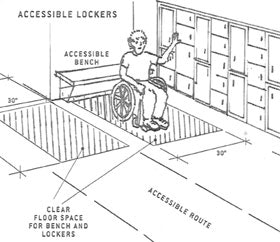
The first thing I had to do was get in better shape, so I headed to my local municipal recreation center. But from the moment I entered the building, it became obvious that there would be obstacles preventing me from fully taking advantage of its amenities. That's because I use a wheelchair, and have done so ever since a skiing accident during a college winter break in 1991 caused a catastrophic spinal injury that left me paralyzed from the chest down. At that moment, my hopes and dreams of becoming a professional football player crashed with me.
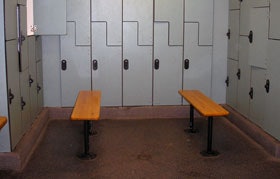
I, like so many others, also face the negative stigma attached to people with disabilities, despite the fact that we form a demographic that has begun to understand in greater numbers the benefits of good health and fitness. Unfortunately, our best efforts to maintain a healthy lifestyle are too often met by unaccommodating recreation centers. Accessing facilities by way of stairs, restricted paths and narrow doorways can be a workout in itself. One is left to imagine the obstacles that wait inside.
According to the most recent U.S. Census Bureau figures, more than 14 million Americans live with some form of physical disability. Whether these individuals are accommodated or excluded depends greatly on the way architects choose to conduct their business and design buildings.
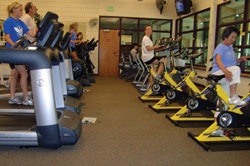
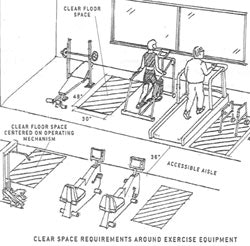
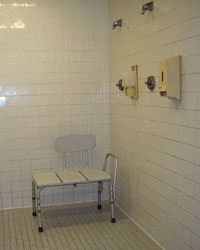
The single biggest complaint about recreation facilities expressed by individuals with disabilities centers on the lack of locker accessibility and overall functionality in locker rooms. According to the ADAAG, "When provided, dressing, fitting or locker rooms must be accessible and comply with all ADAAG provisions. If they are in a cluster, 5 percent, or at least one, must be accessible." For example, in a facility that features a family changing area with three private dressing rooms, at least one must be accessible. The ADAAG goes on, "There must be an accessible route through the door and to all elements in the room that are required to be accessible. If lockers are provided, at least 5 percent, but not less than one of each type (full, half, quarter, etc.), must be accessible." This means there must be a 30-by-48-inch clear floor space in front of lockers for wheelchair access. In my experience, recreation centers rarely comply with this provision.
The code also requires that a bench with a back support be provided — either via an attached backrest or by having the bench mounted to a wall. The locker room design that I typically see involves two facing rows of lockers with a standard bench positioned in between to serve both sides. And in just about every situation, these benches do not provide any form of back support. In addition, the bench typically runs the full distance of the lockers, and I find myself sitting in the access path reaching over the bench in an effort to utilize the end locker. Other members of the club must step around me to get back and forth from the gym and showers. If that end locker is already in use, I am out of luck. In such cases, I'm left to change in the accessible toilet stall and carry my belongings with me into the workout area.
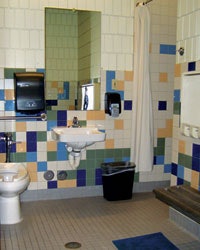
Privacy is another important issue. Many of my friends with disabilities have special assistance devices that make it uncomfortable for them to bathe in a public setting. Moreover, having someone in a seated position in a room full of naked people is potentially uncomfortable not only for the disabled person, but for the able-bodied, as well. Post-shower procedures can present further problems. Locker room floors are invariably wet, and often dirty. Many people with disabilities, myself included, have difficulty bending over, and some of us need to place our clothes on the floor and either receive help or use a specialized device to assist us in getting dressed. To avoid the issues of wet floors and lack of privacy, many people with disabilities again resort to changing in the wheelchair-accessible toilet stall, where cleanliness is an even greater concern (and usually a bigger problem).
The most accommodating recreation facilities offer private changing rooms for disabled users that are separate from the general locker room. These areas provide users with their own toilet, vanity, shower and lockers. They also allow access for those who might require another person, perhaps of the opposite sex, to help with changing or bathing. Often, family changing rooms in recreation facilities are individual rooms that can be locked for security and privacy, occasionally requiring one party to wait in a closed-door common area before one of the smaller, private rooms is vacated. Common areas typically include lockers, and parents sometimes opt to change their children there instead of waiting for a private room. As someone who does not require assistance but appreciates the privacy of an individual changing room, I nonetheless feel uncomfortable going into a large common area where there are mothers with young children. I know many mothers feel the same way about having a grown man in the common area with them and their kids. I believe every facility should have these individual changing rooms or common areas; however, I personally prefer a curtained-off changing area within the general locker room. This affords someone who is independent the small amount of privacy he or she desires. A private shower in the same vicinity of the regular showers provides similar comfort.
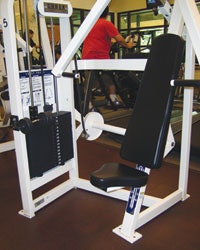
Raising the Bar in Weight Rooms
During my football-playing days, I knew all of the machines and could perform all of the lifts. After my accident, I suddenly found myself relearning everything about lifting. Without the use of core muscles around my waist, I simply did not have the balance I needed to perform like I used to. Moreover, I found much of the equipment hard to use, with benches that were too small and weight-stack adjustments that required getting up and going around the machine. In many cases, the backsides of machines were not accessible to a wheelchair at all. I thought using free weights might be easier, but quickly discovered how wrong I was. Free-weight areas are almost always in disarray, with dumbbells left on the floor right in my path of travel and benches moved around for customized lifts but seldom returned to their proper locations. I soon began to feel as if I was the obstacle in the way of others trying to complete their workouts.
The ADAAG requires that "at least one of each type of exercise equipment or machine has clear floor space of at least 30 by 48 inches and be served by an accessible route." This floor space may serve more than one piece of equipment — between a treadmill and a stationary bike, for example — but it must be positioned so that a person in a wheelchair can transfer to the piece of equipment from a seated position. Sadly, most facility operators look at this clear floor area as wasted or underutilized space. They try to cram as many machines into as small a space as possible — eliminating any access in the process.
Most facilities make available multiple pieces of equipment designed to work the same muscle groups. For example, both a machine and free weights are offered for bicep strength training, and both of these areas must meet the ADAAG requirements. However, if a facility makes available several stationary bikes from multiple manufacturers, only one of them needs to be accessible. Manufacturers such as Vortex Fitness and Equalizer Exercise Machines are beginning to develop weight equipment that is more user friendly to individuals with disabilities, while remaining completely functional for able-bodied users. Benches on equipment are getting wider, making transfer easier, as well as providing stability for those with balance issues. When a facility is purchasing equipment, it should strive to include pieces that also provide fitness opportunities for those with lower-extremity disabilities.
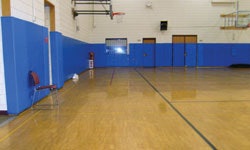
Finding Room in the Gym
Gymnasiums are popular among facility users for their ability to facilitate group exercise and team sports. Those of us with disabilities feel no differently. In fact, wheelchair basketball is the top sport in the world for people with disabilities. Almost all wheelchair athletes will come to the gym with more than one chair — their everyday chair and their sports chair. My sports chair is much wider than the average everyday chair and cannot roll through a standard-width door. I must either remove the rear wheels to narrow the chair and squeeze it through the door, or I have to ask another person to pick up the chair and slide it through the door sideways. Wider doors or double doors with no middle post are necessary to access these spaces. I also find that once I am in the gym, the space around the playing surface is typically too small to store extra wheelchairs. Either the wall is dangerously close to the sideline or there are bleachers that extend right up to the court.
Gymnasiums should be designed to accommodate many different functions and should have plenty of clear floor area adjacent to the playing surface to allow for a variety of user types. Another popular gym-based sport is quad rugby. Many people know it as "Murderball," from the popular 2005 documentary chronicling the U.S. national team's road to the 2004 Paralympic Games. This sport is played on a typical basketball court, and to score, a player is required to cross the court's end line, beyond which at least five feet of floor space is needed. In an effort to save space, many traditional gyms have the wall placed within a few feet of the end line, rendering the court unusable for quad rugby.

Sink or Swim... If You Can Get In
Among the best exercises for anyone is lap swimming. For the disabled community, this exercise provides numerous benefits - including muscle strengthening and muscle relaxation. It's impressive that swimming pools, catch pools, wading pools and spas are being included in so many of today's recreation facilities. However, accessing these areas can be dangerous for even the most able-bodied of individuals. For people with disabilities, it can be life-threatening.

Attitude Adjustment
It is hard to believe, but even today I encounter basic discrimination based on my disability. Some recreation facility operators still have the attitude that their facility is only for healthy, able-bodied individuals and that they are not responsible for accommodating those with disabilities. Nothing could be further from the truth. These facilities must be designed for the health and well-being of all people.
More common, still, are the curious stares I get from other facility users. Human beings are methodical by nature and tend to get upset when they encounter anything that throws them off their routine; or is it just that they are afraid of what they don't understand? Fear of the unknown can be discomforting. I argue that it is therefore more important than ever to integrate members of the disabled community with their able-bodied neighbors. The more these two groups interact, the more comfortable all people will be.
I share these thoughts as a plea to recreation center designers and operators. The concepts discussed here should be integrated into the design of the facility from the beginning, when it is much more cost-effective, rather than renovating at a later date. Whether preparing for a new facility or the renovation of an existing one, facility operators should consult with members of the disabled community to learn firsthand their needs and desires, and they shouldn't be afraid to go above and beyond the norm. Whether they lack enlightenment on the challenges faced by individuals with disabilities or empowerment to make changes to their facilities, too many operators do only what is required by law. More need to look at the issue from a different perspective and create something truly functional — for everyone.











